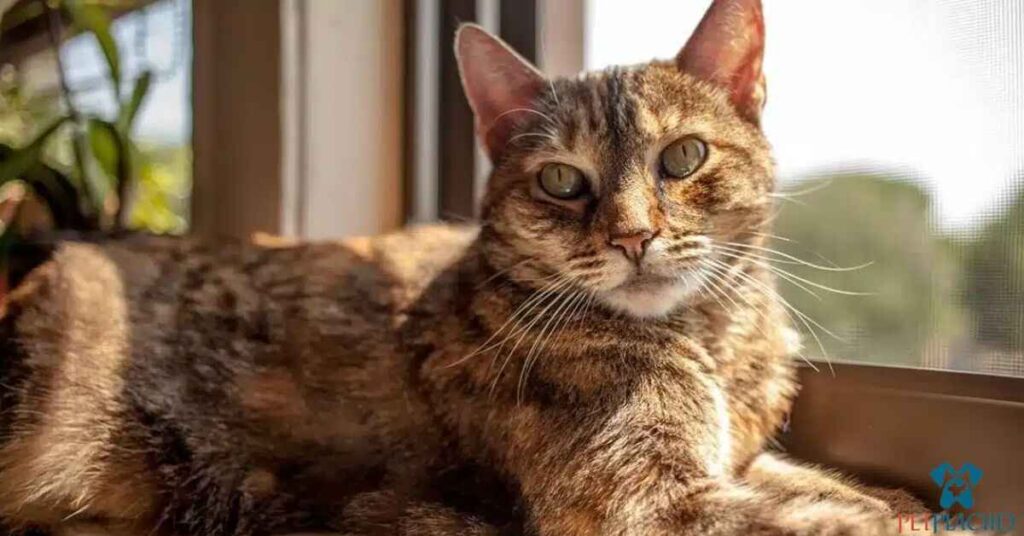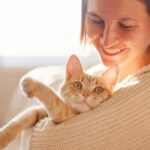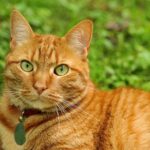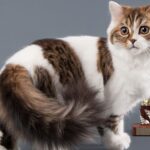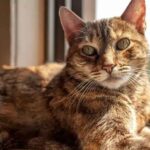Torbie cats are a delightful fusion of two distinct feline fur patterns – tortoiseshell and tabby.
The word “torbie” is a portmanteau combining these two terms, reflecting the unique blend of characteristics these cats exhibit.
Their coats display an enchanting marbling of the classic tabby striping overlaid with splotches of rich tortoiseshell coloring, creating a truly one-of-a-kind look.
What are Tortoiseshell Cats?
Tortoiseshell cats, as their name suggests, sport a coat pattern reminiscent of the intricate shell of a tortoise.
This pattern arises from a combination of two colors, typically vibrant shades of orange, red, yellow, or cream intermingled with deeper tones of black or dark brown fur.
The resemblance to the mottled appearance of a tortoise shell is what gives these felines their distinctive moniker.
Interestingly, tortoiseshell cats are almost exclusively female due to the genetic mechanisms responsible for producing this fur pattern.
The genes controlling the tortoiseshell trait are located on the X chromosome, meaning that only females, with their two X chromosomes, can fully express the range of colors required for the pattern.
Male cats exhibiting the tortoiseshell pattern are incredibly rare, occurring only in cases of chromosomal abnormalities, such as having an extra X chromosome (XXY).
What are Tabby Cats?
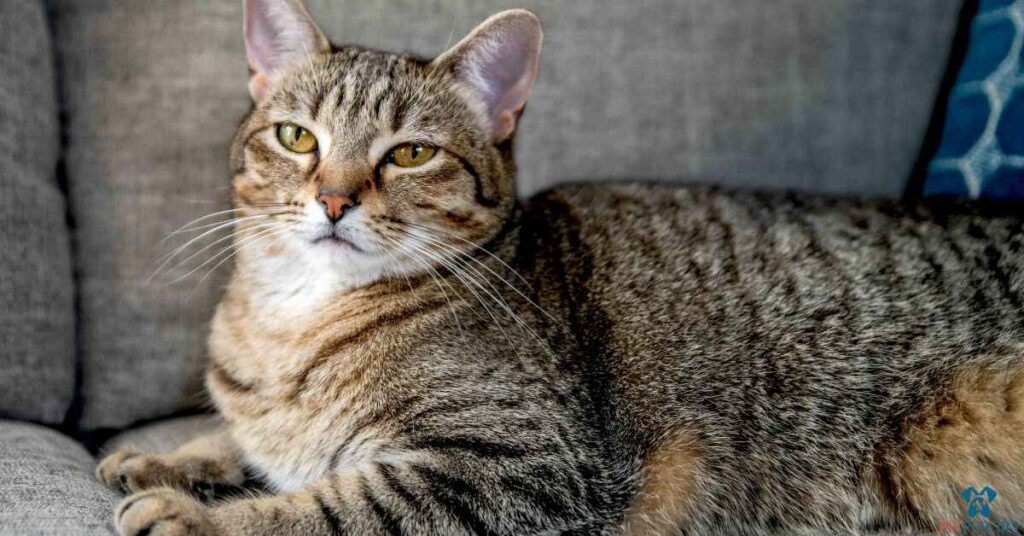
The tabby pattern is one of the most commonly encountered fur patterns among domestic cats. All tabby cats share a few key markings:
- A distinct “M” shape on their forehead
- Pencil-like striping around their eyes, reminiscent of eyeliner
- Thin lines running vertically along their faces
- Banding patterns encircling their legs and tails
The presence or absence of these tabby markings is determined by the Agouti gene. Cats with a dominant “A” allele (variation) of this gene will exhibit the tabby pattern, while those with the recessive “a” allele will have a solid, non-patterned coat.
Torbie Cats: A Mix Between Tortoiseshell and Tabby
As their name implies, torbie cats are a delightful combination of the tortoiseshell and tabby fur patterns. These felines inherit and express the distinct characteristics of both coat types simultaneously.
Sometimes referred to as “reverse calicos” or “patched tabbies,” torbie cats display the classic tabby striping and marbling, but with the addition of patches or splotches of a secondary color typical of the tortoiseshell pattern, usually orange or cream (in the case of dilute torbies).
The end result is a visually striking feline with a striped or marbled base coat overlaid with swirls and splotches of a contrasting color, creating a truly unique and captivating appearance.
Are There Male Torbie Cats?
Much like their tortoiseshell counterparts, male torbie cats are exceptionally rare. These felines are often referred to as “unicorn cats” due to the incredibly low odds of their occurrence.
Estimates suggest that the chance of a torbie being male can range from as low as 1 in 3,000 to an astonishing 1 in 10,000.
The rarity of male torbie cats stems from the same genetic mechanisms that govern the expression of the tortoiseshell pattern.
Since the genes responsible for this pattern are located on the X chromosome, males would typically only inherit one X chromosome, preventing the full manifestation of the tortoiseshell component of the torbie coat.
Male torbie cats can only occur in cases of chromosomal aberrations, where the male inherits an extra X chromosome (XXY), allowing for the expression of both the tabby and tortoiseshell patterns simultaneously.
Recommended Post:
Why is My Cat Panting in the Car? Causes and Tips to Keep Your Feline Calm
Torbie Cats are Popular
A study published in the Journal of Applied Animal Welfare Science in 2014 examined the average length of stay for 5,659 cats at a no-kill animal shelter between 2008 and 2012.
The findings revealed that torbie cats had the shortest average stay of 48.3 days, significantly lower than the overall average of 61.2 days for all cats.
Interestingly, torbie cats were adopted more quickly than their straightforward calico, tortoiseshell, and tabby counterparts, each of which averaged well over 60 days at the shelter.
This data suggests that the unique and visually appealing fur pattern of torbie cats may contribute to their popularity among prospective adopters, leading to a shorter wait time for these felines to find their forever homes.
What are Dilute Torbies?
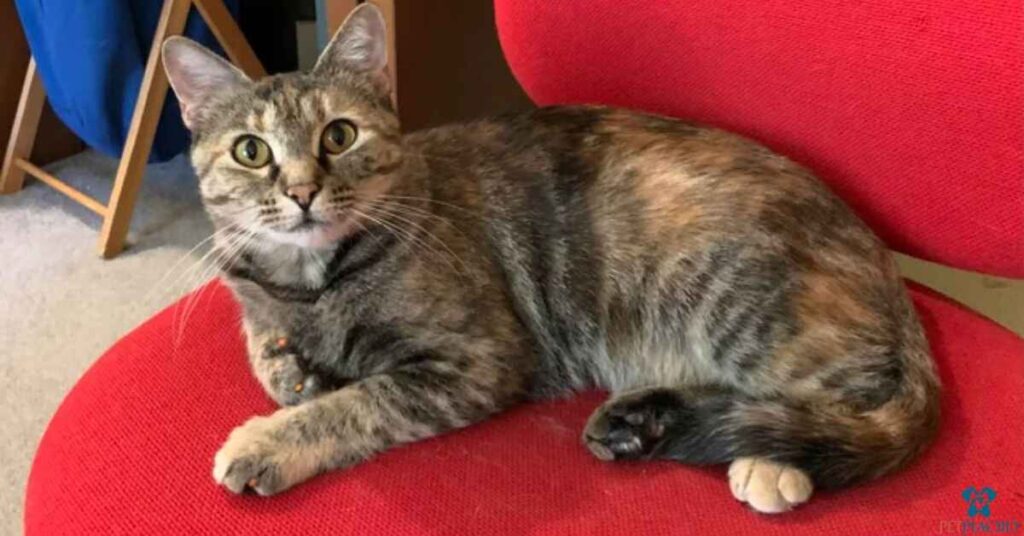
Dilute torbies are a variation of the torbie cat characterized by a softer, more muted color palette. The term “dilute” refers to the presence of a specific gene that impacts the intensity of the cat’s coat color.
In cats, the gene responsible for coat color dilution is known as the “Dilute” gene, represented by the symbol “D.”
This gene has two alleles (variations): “D” (Dense) and “d” (Dilute). The Dense allele is dominant, while the Dilute allele is recessive.
When a cat inherits the recessive Dilute allele (d) from both parents, the intensity of their coat color is reduced. This results in a transformation of the typical vibrant hues:
- Black fur takes on a smoky blue-gray tone
- Red fur becomes a softer cream shade
Therefore, a dilute torbie exhibits the characteristic tabby striping and tortoiseshell patterning, but with a more muted, “washed-out” color palette featuring shades of blue, cream, and gray.
Torbies are Not as Common as Other Cat Fur Patterns
While torbie cats are undoubtedly striking in appearance, they are relatively less common than their solid-colored tabby or tortoiseshell counterparts.
This scarcity is due to the specific genetic combinations required to produce the unique blend of fur patterns that defines the torbie.
Moreover, dilute torbies are even rarer, as their muted coloration is the result of inheriting the recessive Dilute gene from both parents – a low-probability event in itself.
Conclusion
Torbie cats are a true feline rarity, a captivating fusion of two distinct fur patterns that creates a visually stunning and one-of-a-kind companion.
Their marbled coats, adorned with swirls of tortoiseshell color against a backdrop of tabby striping, are a testament to the remarkable diversity of cat genetics and coat variations.
While relatively less common than some other cat fur patterns, the unique appeal of torbie cats has been recognized, with studies showing their increasing popularity among adopters.
Frequently Asked Questions
Are Torbie cats rare?
Torbie cats are not very common but are not exceedingly rare either. Their unique blend of tortoiseshell and tabby patterns makes them special finds.
Can Torbie cats be male?
Male Torbie cats are extremely rare and usually sterile due to a genetic anomaly, typically having XXY chromosomes.
How do I know if my cat is a Torbie?
A Torbie cat has a mix of tortoiseshell and tabby markings. Look for a coat that combines solid colors and stripes in shades like orange, black, and brown.
Do Torbie cats have specific health problems?
Torbie cats do not have health problems specific to their coat pattern. Their health concerns are similar to other cats and depend on their breed and genetics.
What breeds can be Torbies?
Torbie patterns can appear in various breeds, including American Shorthair, Maine Coon, and British Shorthair. It’s a color pattern rather than a breed-specific trait.

Jackson is a seasoned professional in the field of pets, boasting four years of enriching experience. His expertise spans pet care, training, and health, ensuring insightful and reliable content for pet enthusiasts on our site.

